Wolf in the Snow

by Matthew Cordell. ![]() Picture Book. 48 pages. Grades PreK-2.
Picture Book. 48 pages. Grades PreK-2.
Find this book: Amazon

Teacher's Guide
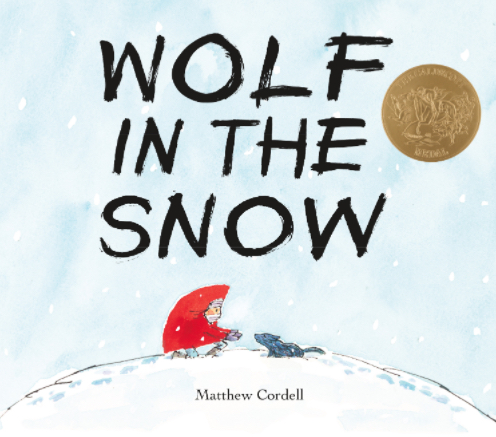
A young girl gets lost in a snowstorm on her way home from school. Simultaneously, a wolf pup gets separated from its pack. When the girl finds the pup, she must decide whether to help the pup find the pack, which she can hear howling farther away. In this mostly wordless book (except for sound effects), we are immersed in a story of courage and the joy of returning to one's family. The richly textured ink and watercolor illustrations won this title the Caldecott Award.
The story opens before the title page with the girl and her family at home on a winter day. We also see a wolf pup with its family. These scenes set the stage of home and belonging, and contrast with the barren landscape containing scattered clusters of evergreens which dominate the lost scenes. Scenes of the girl continue to alternate with scenes of the pup.
The girl heads out to school in a red hooded parka as her dog barks after her. Meanwhile, the wolf pack is perched on a rocky outcrop. It is only at this point that the author/illustrator has inserted the title page. This also signifies a gap in time, because the next double-page spread shows the girl heading home from school as the snow begins to fall.
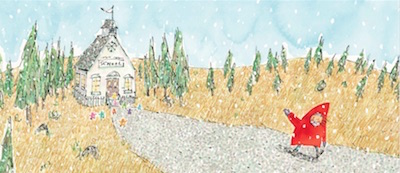
The next double-page shows a startlingly, more realistic portrait of the wolf pack moving across the landscape as well.
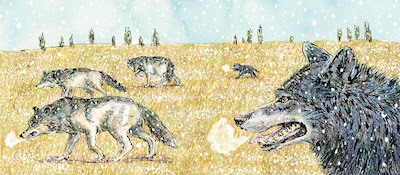
The change in illustration style when portraying the wolves is particularly effective at setting them apart as wild and unfamiliar. These are no storybook caricatures of wolves.
Soon, it's snowing harder and the girl and pup get lost, taking shelter in the same copse of trees. She picks up the whining pup and heads back out into the deepening snow when they hear a wolf howl coming from the next hill over.
The girl decides to take the pup back to the pack, crossing fields of snow, stepping across a stream, fighting off a raccoon, passing by scary owl calls, and climbing the next hill.
When the girl meets the pup's parent (mother?), there's a tense moment before the pup is set down and it runs to the parent. All is well, except now the girl is exhausted, managing to walk just a short way back towards home before she collapses. We can see the flashlight beams of her family looking for her, but the wolves have also noticed her deep in a cluster of trees.
The wolf pack comes to her and sets up howling, which leads the girl's mother and her dog to the spot. At this point, the scarf that has been hiding the lower half of the girl's face the whole time slips down, and we can see the corner of a relieved smile.
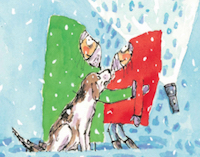
The book closes with the family and the dog curled up on the rug in front of the fire, followed by one final portrait of the parent wolf (or is it the pup?) howling.
This wonderful story of a favor returned is great for cozy one-on-one sharing, but also lends itself well to "reading" aloud to a group. Display the pages on a large monitor, if you have the technology, to make it easier for the whole class to see the fine details.
(Continued Below)
Advertisement:

Things to Talk About and Notice
- With all wordless books, it's good to go slowly and constantly ask students, "What do you notice?" This engages them and also ensures that everyone is able to follow the story.
- Some students will need help seeing the Little Red Riding Hood allusion. You can also give a quick recap of the fairy tale for kids who aren't familiar with it.
- This is a good story to use for making predictions. Choose a couple of places to stop when reading the story. What do you think will happen next? Why? Afterwards: Were any of your predictions right? How would it change the story if one of your other predictions happened instead?
- Look closely at the expressions on the girl's face. For the most part, you can only see her eyes. Can you guess what she's feeling? Does her body language tell you more about what she's feeling? How about the wolves? Are there any clues about what they're feeling?
- In the scene where the wolves go to the collapsed girl, why do you think they go to her?
- What do you notice about how different Cordell's drawing styles are for the girl and the wolves? Why? Do you think it's effective? How would the feeling of the story change if the girl was drawn more realistically? What if the wolves were more cartoon-like?
- Look for the triangles (including distorted ones), rectangles, and circles in the illustrations. Notice their different qualities: sharp, edgy, contained, soft, cold, comforting. Notice how Cordell uses shapes for the borders of the illustrations too. When does he have the illustrations go right to the edge of the page? When is it inside a square or a circle? How does this change the mood or the focus?
- Does it snow where you are? If not, has anyone in your class experienced snow? What have you done in the snow? If you've never been in snow, what would you most like to do if you were in snow: sledding, building snowmen, snow forts, snowball fights, skiing, hiking?

Activities
- Read one or more versions of Little Red Riding Hood, such as Trina Schart Hyman's (see below). Compare and contrast the two stories: characters, plot, and theme. What does Wolf in the Snow have to say about wolves that is different from the fairy tale?
- Try making art using some of the techniques that Cordell uses, including the triangular-shaped girl. Are there other shapes you can create people from?
- Create your own wordless books.
- Read other wordless books, and look for ways the authors give you clues to what is happening.
- Read other books illustrated by Cordell (see below). How does his illustration style change from book to book? Why do you think he chose each style? Compare his illustrations to that of other illustrators.
- Read more about wolves. Where do they live? Do they hunt people? What do they eat? Did they once live where you are?
- Act out the scenes from the book.
- Create or select music to go along with the book.
- Choreograph a dance version of the book.
- There are more winter activities in our article Winter in Books for Children and Teens.
(Continued Below)
Advertisement:

Related Books
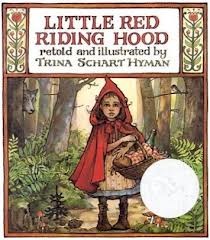
 Grades PreK - 4
Grades PreK - 4
Little Red Riding Hood by Trina Schart Hyman. Picture Book. 32 pages.
Find this book: Amazon
This book was a Caldecott Honor Book for 1984 and it is gorgeously illustrated. The retelling of the story is also solid. Curl up with your favorite child or group of children for an intimate reading of this spooky story. The illustrations are also a great inspiration for young artists.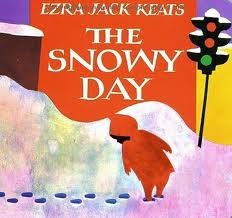
 Grades PreK - 1
Grades PreK - 1
The Snowy Day by Ezra Jack Keats. Picture Book. 40 pages.
Find this book: Amazon
In this Caldecott Medal winner, a little African-American boy experiences the snow in the city spending the day outside playing. He slides down a snow bank in his red snow suit, makes tracks through the snow, makes snow angels, and knocks snow from a tree onto his head. Afraid the snow won't last, Peter tries to keep a snowball in his pocket until the next day. Read More in our Featured Book Teachers Guide with discussion questions, extension activities, related books and links.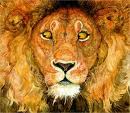
 Grades PreK - 3
Grades PreK - 3
The Lion and the Mouse by Jerry Pinkney. Wordless Picture Book. 40 pages.
Find this book: Amazon
This wordless Aesop fable is gorgeous. We are surprised when the lion frees the mouse he has caught and then touched when mouse finds a surprising way to return the favor. The cover of the book fittingly is absent of any title or other print to set the silent nature of a wordless book from the very beginning. A great retelling of a classic for a new generation. Winner of the 2010 Caldecott Medal.
(Continued Below)
Advertisement:

Related Areas Within Carol Hurst's Children's Literature Web Site
- Winter through Children's Books: Classroom Unit for Preschool through Eighth Grade
http://www.carolhurst.com/subjects/winter.html - 2018 American Library Association Youth Media Awards:
Listing of award winners with links to some free teacher's guides. - Free Teacher's Guides: A listing of all our teacher's guides. Picture Books, Nonfiction and Fiction.

